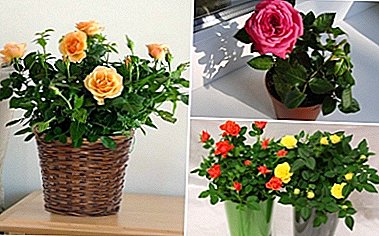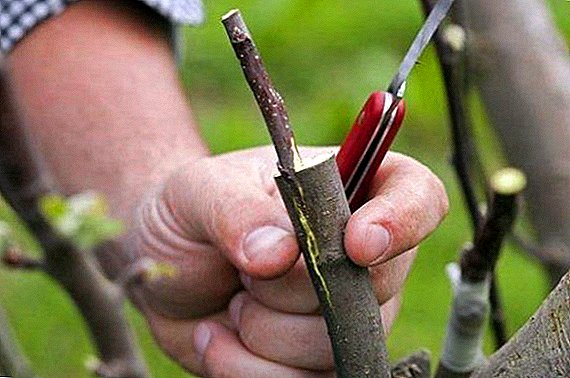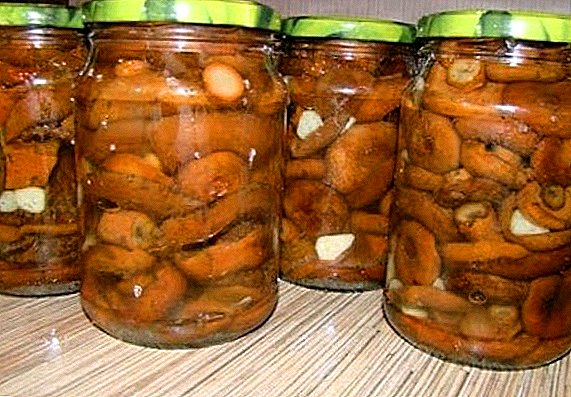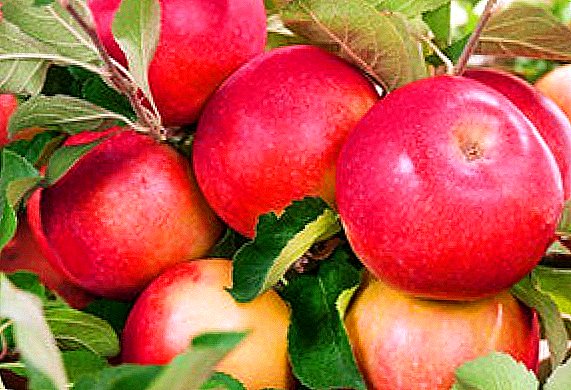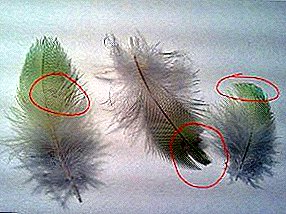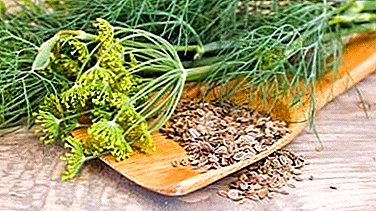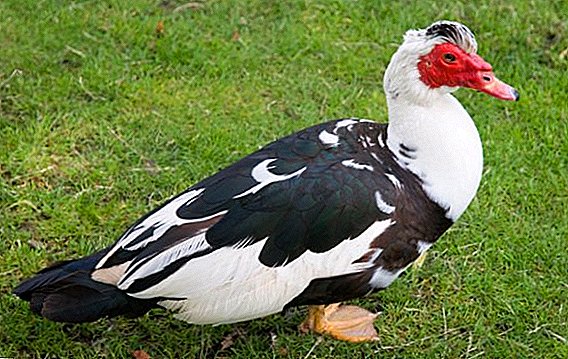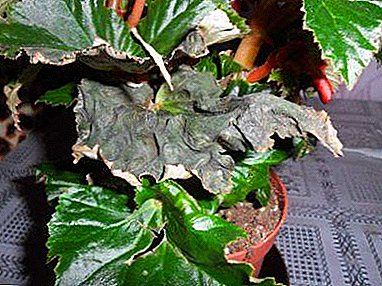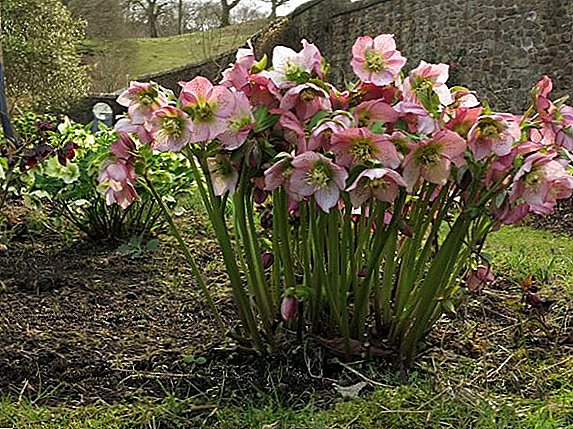 Real fans of flower beds want the colorful flowering plants to delight them even in winter. A real gift for such flower growers is a plant. hellebore, which can please with its flowers even in November and at the very beginning of April. About the hellebore, its types and varieties, read on.
Real fans of flower beds want the colorful flowering plants to delight them even in winter. A real gift for such flower growers is a plant. hellebore, which can please with its flowers even in November and at the very beginning of April. About the hellebore, its types and varieties, read on.
Black Hellebore (Helleborus niger)
 This is the most common and popular in the landscape design form hellebore. In nature, it is often found in territories from southern Germany and to the Balkan Peninsula, growing mainly on mountain woodlands. Black hellebore is a perennial herb that is able to stretch up to 30 cm. It is distinguished by large flowers directed upwards, the diameter of which can reach 8 cm. They are formed on very tall peduncles (up to 60 cm) and are distinguished by a two-tone color — snow white in the flower and light pink outside.
This is the most common and popular in the landscape design form hellebore. In nature, it is often found in territories from southern Germany and to the Balkan Peninsula, growing mainly on mountain woodlands. Black hellebore is a perennial herb that is able to stretch up to 30 cm. It is distinguished by large flowers directed upwards, the diameter of which can reach 8 cm. They are formed on very tall peduncles (up to 60 cm) and are distinguished by a two-tone color — snow white in the flower and light pink outside.
The blooming of black hellebore begins at the very beginning of April, when other plants are just beginning to revive. It lasts about two weeks. The leaves of the plant are dark green in color, very dense, do not fall in winter. By the way, winter hardiness of this type of freezer is very high - it easily tolerates lowering the temperature to -35 ° C. This species has two subspecies - nigercors and nigristern.
Also in ornamental floriculture, the following varieties of black hellebore are quite common:
- "Potter's wheel". A variety of hellebore, which produces the largest flowers that can reach a diameter of 12 cm.
- "HGC Joshua". It belongs to the number of early varieties of black hellebore, on which flowers appear in November.
- "Praecox". Another variety of hellebore, blooming in November. Differs pale pink color flowers.
Important! All types of hellebore are poisonous, although their rhizomes are used in traditional medicine. For this reason, resort to treatment of hellebore is only at the advice of doctors and taking into account all the rules of preparation of medicinal tinctures. People suffering from diseases of the heart and liver, hellebore treatment is contraindicated.
Caucasian hellebore (Helleborus caucasicus)
 From the name of this hellebore it becomes clear that it is most common in the Caucasus, although it is not less common in the mountainous areas of Greece and Turkey. Caucasian hellebore is distinguished by a long flowering period - from the end of April to the middle of June. Flowers are also formed on high peduncles from 20 to 50 cm, however, unlike the black hellebore, in the Caucasus they are drooping.
From the name of this hellebore it becomes clear that it is most common in the Caucasus, although it is not less common in the mountainous areas of Greece and Turkey. Caucasian hellebore is distinguished by a long flowering period - from the end of April to the middle of June. Flowers are also formed on high peduncles from 20 to 50 cm, however, unlike the black hellebore, in the Caucasus they are drooping.
The diameter of each flower can reach 8 cm, the color is white with a greenish or yellowish-brown shade. The leaves of the plant are evergreen, fleshy and long - about 15 cm. They are also extended thanks to an oblong petiole. Leaves and stems tolerate even the lowest temperature drops. The species of Caucasian common hellebore is one of the most poisonous, and, probably, for this reason, it is less likely to land on home gardens and flower beds.
Moroznik Abkhaz (Helleborus abchasicus)
The Abkhaz frostbite is a rather colorful species of this plant, since even its bare fleshy leaves can have not only a dark green color, but also a violet-green one. In addition, during flowering, 40-centimeter purple-red peduncles form large drooping flowers of a dark red color (sometimes darker specks are also present on the flowers). The diameter of each flower is about 8 cm, and the flowering period lasts from the beginning of April and almost until the end of May. It has good frost resistance.
Did you know? In Germany, the more popular is the hellebore in a pot, which is usually presented as a Christmas present. A legend is also associated with this plant, according to which it was the hellebore that gave one of the sub-notes to baby Jesus in honor of his birth. In this regard, the flower has another name - "Rose of Christ".
Eastern Hellebore (Helleborus orientalis)
 The homeland of the eastern hellebore is not only the Caucasus, but also Greece, and even Turkey. This species is also among the perennial. It grows only up to 30 cm in height, pleases with medium-sized flowers - up to 5 cm in diameter. The color of the flowers is very pleasant - purple. The leaves of the eastern hellebore also have medium size, dense fleshy structure and a dark green color. However, the main disadvantage of this species is associated with the leaves - they are often affected by the fungus, due to which the plant loses its attractiveness.
The homeland of the eastern hellebore is not only the Caucasus, but also Greece, and even Turkey. This species is also among the perennial. It grows only up to 30 cm in height, pleases with medium-sized flowers - up to 5 cm in diameter. The color of the flowers is very pleasant - purple. The leaves of the eastern hellebore also have medium size, dense fleshy structure and a dark green color. However, the main disadvantage of this species is associated with the leaves - they are often affected by the fungus, due to which the plant loses its attractiveness.
In the floriculture there are several varieties of Eastern hellebore, among which the most popular are:
- "White swan"Oriental hellebore with white small flowers.
- "Rock'n'roll". It also has bright flowers, on which there are red-pink dots, which is the main difference of the variety.
- "Blue anemone"Oriental hellebore with light purple flowers.
- "Lady series". This is a variety of Oriental hellebore varieties, the main feature of which are fast-growing grass bushes capable of reaching 40 cm in height. During flowering, flowers of six flowers form at once on the bushes.
Stinking hellebore (Helleborus foetidus)
 This species of hellebore is common in the wild only in the western part of Europe, where it occurs on stony, well-lit slopes. The smelly hellebore differs in abundant leafy stems, which are characterized by the presence of narrow shiny segments, painted in a dark green color. The leaves on the plant overwinter. During flowering on a low hellebore up to 30 cm in height, a high peduncle is formed up to 80 cm. The peduncle is almost completely covered with inflorescences consisting of a large number of flowers. Unlike all other species, the smelly hellebore flowers are very small, have a bell-shaped form. Their color is no less interesting - green with red-brown edges. In addition to good resistance to low temperatures, this species also endures strong droughts.
This species of hellebore is common in the wild only in the western part of Europe, where it occurs on stony, well-lit slopes. The smelly hellebore differs in abundant leafy stems, which are characterized by the presence of narrow shiny segments, painted in a dark green color. The leaves on the plant overwinter. During flowering on a low hellebore up to 30 cm in height, a high peduncle is formed up to 80 cm. The peduncle is almost completely covered with inflorescences consisting of a large number of flowers. Unlike all other species, the smelly hellebore flowers are very small, have a bell-shaped form. Their color is no less interesting - green with red-brown edges. In addition to good resistance to low temperatures, this species also endures strong droughts.
In floriculture, only one ornamental variety of stinky hellebore is used - "Wester flisk". It differs from the main representative of the species by narrower segments on the leaves and a reddish tinge of twigs with buds. The fragrance of flowers is not very pleasant.
Important! A seedling method is best suited for planting a hellebore, since when sowing seeds from seed, the first flowering can be seen only in the third year of the growing season. But the kind of hellebore smelly is able to multiply and self-seeding.
Frost Corsican (Helleborus argutifolius)
 The birthplace of this species of hellebore is the Mediterranean islands of Corsica and Sardinia. Corsican hellebore is one of the tallest of its kind - its stems are able to stretch up to 75 cm in height. During growth, only a few straight stems are formed from a single root, which immediately begin to expand widely. During flowering on the bush small flower stalks are formed, densely covered with very thick racemes with flowers.
The birthplace of this species of hellebore is the Mediterranean islands of Corsica and Sardinia. Corsican hellebore is one of the tallest of its kind - its stems are able to stretch up to 75 cm in height. During growth, only a few straight stems are formed from a single root, which immediately begin to expand widely. During flowering on the bush small flower stalks are formed, densely covered with very thick racemes with flowers.
The shape of the flowers is cupped, and the color is yellowish green. On the island of Corsica, the flowering of this species of hellebore begins in February, whereas in our latitudes this period of its growing season occurs at the beginning of April. Corsican hellebore is not distinguished by good frost resistance, therefore it is recommended to cover it with sawdust and lapnik for the winter. One of the most famous varieties of this species is the variety "Grunspecht". It is also a rather large plant, on which in April inflorescences of a red-green color are formed.
Red Hellebore (Helleborus purpurascens)
Reddish hellebore can be found even in Ukraine, as it is one of the representatives of the flora of the Carpathian Mountains. This plant is also distributed in Hungary and Romania.
Distinctive features of this type of hellebore are:
- large leaves on long petioles, which at the same time have palmar incisions, and also differ in the different color of the two sides of the leaf - the top one is dark green, bare and shiny, and the bottom one has a gray tint;
- The red flowers of the hellebore are drooping, painted outside of the anther in violet-purple color, and from the inside - in greenish color; over time, the flowers are completely green;
- the sizes of flowers are medium (about 4 cm in diameter), but they are distinguished by their rather unpleasant smell
- bloom occurs in April and lasts about 4 weeks.
Important! To independently collect the seeds of hellebore, on the formed after flowering boxes need to tie gauze bags. Then, when cracking the bolls, the seeds will not fall to the ground, but remain in the bag, after which they can be dried and sown. It is better to sow hellebore for the winter so that the seeds during storage do not lose their germination.
Hellebore hybrid (Helleborus x hybridus)
 In this separate species several varieties of hellebore garden hybrids were included, each of which combines several of the above described species at once. Due to this, when sowing a hybrid hellebore, you can get on one site the most different colors of flowers, the diameter of which varies from 5 to 8 cm.
In this separate species several varieties of hellebore garden hybrids were included, each of which combines several of the above described species at once. Due to this, when sowing a hybrid hellebore, you can get on one site the most different colors of flowers, the diameter of which varies from 5 to 8 cm.
The most popular in floriculture varieties of hybrid hellebore are:
- "Violetta"This variety of hellebore has white flowers that are distinguished by a very attractive fluffy center, as well as by the presence of very thin streaks of pink color and the same color border.
- "Belinda"It is distinguished by double flowers of white color, which are also decorated with a greenish-pink cross section and an attractive border on each petal.
- "Queen of the Night". This variety has flowers of dark purple color, as well as contrasting yellow stamens.
Did you know? The total number of species of hellebore reaches 20, and in addition to the florists mentioned in the article, the species also deserve such species as green hellebore, fragrant hellebore, Tibetan hellebore, shrubby hellebore, Stern hellebore.
Hellebore - This is really a very beautiful plant with unusually delicate flowers of various shades. Since it is easy to care for him, you can very easily choose your hellebore among the varieties and types listed above and successfully propagate it in your flower bed. Do not forget about the poisonousness of this plant.


